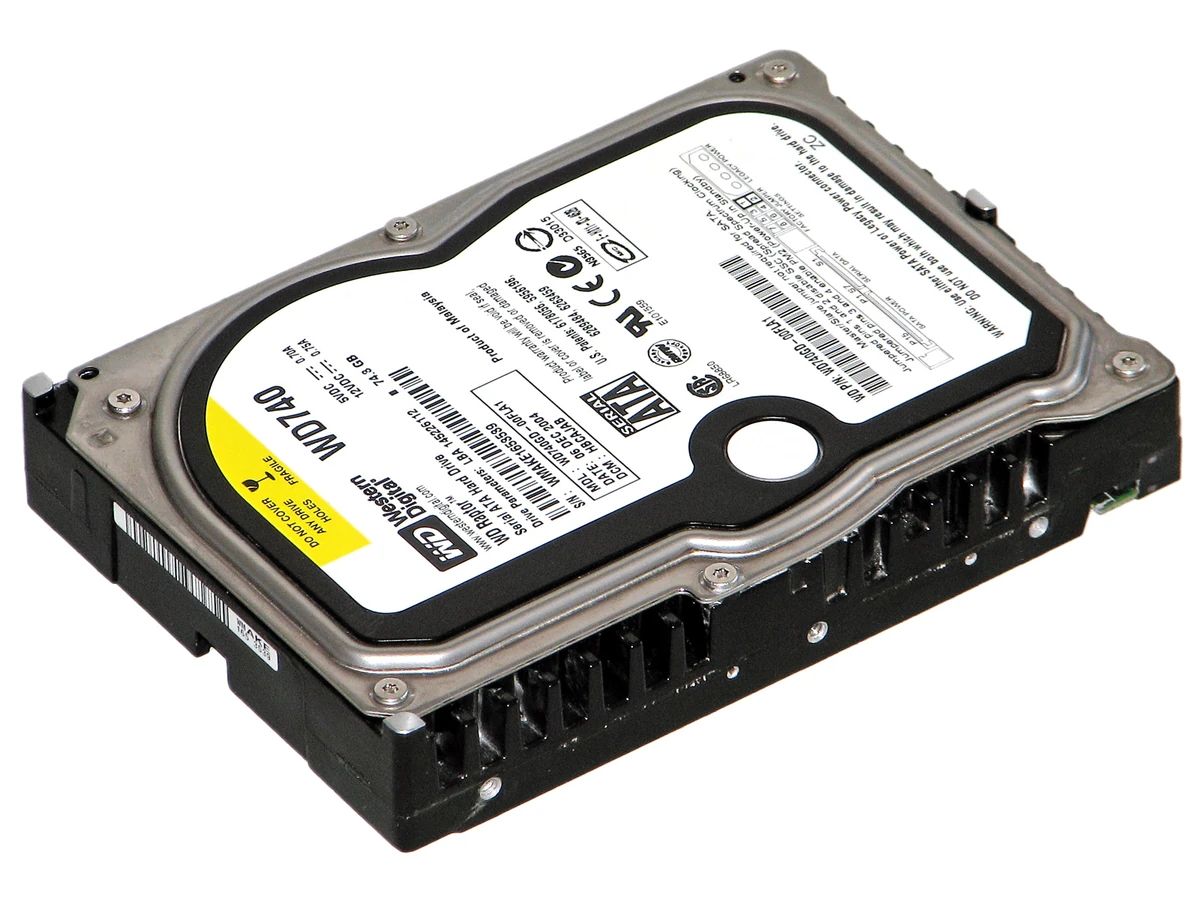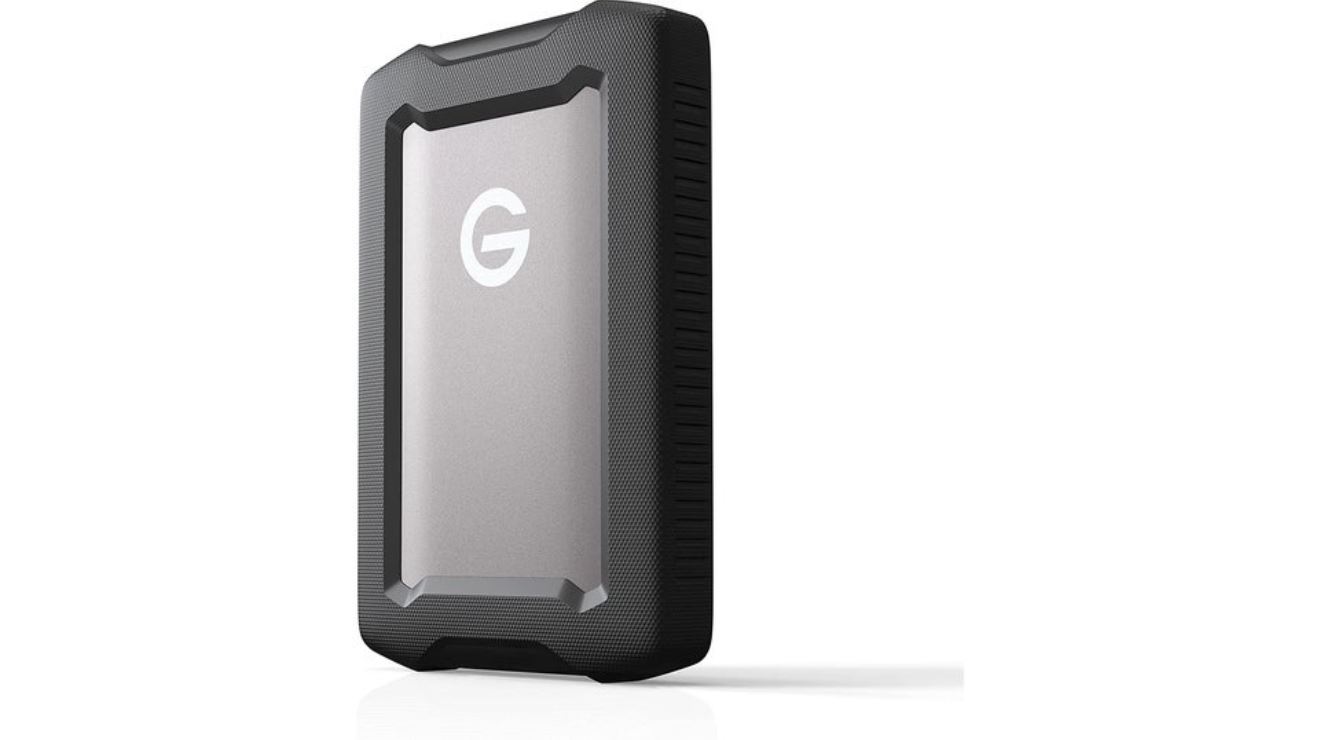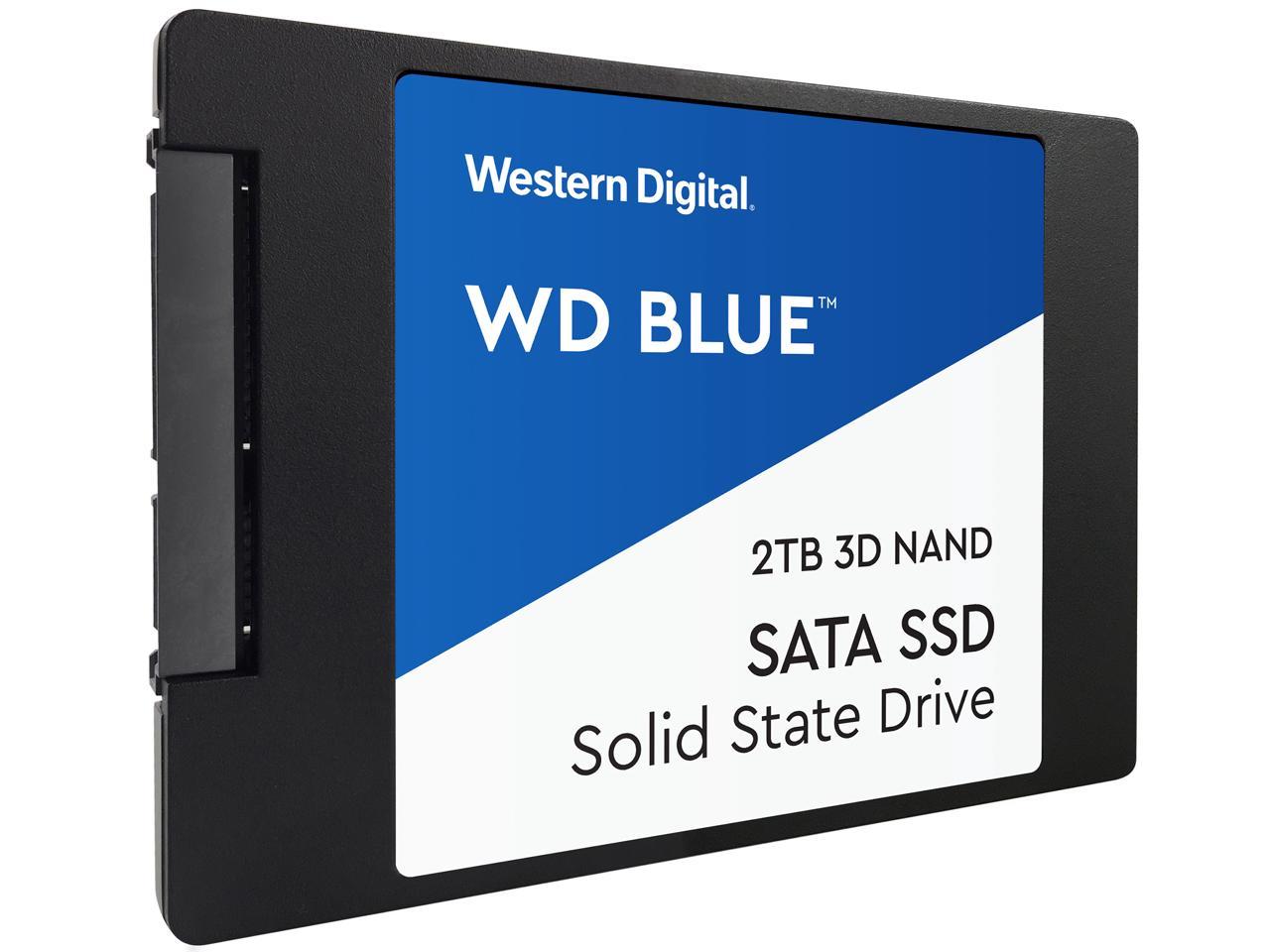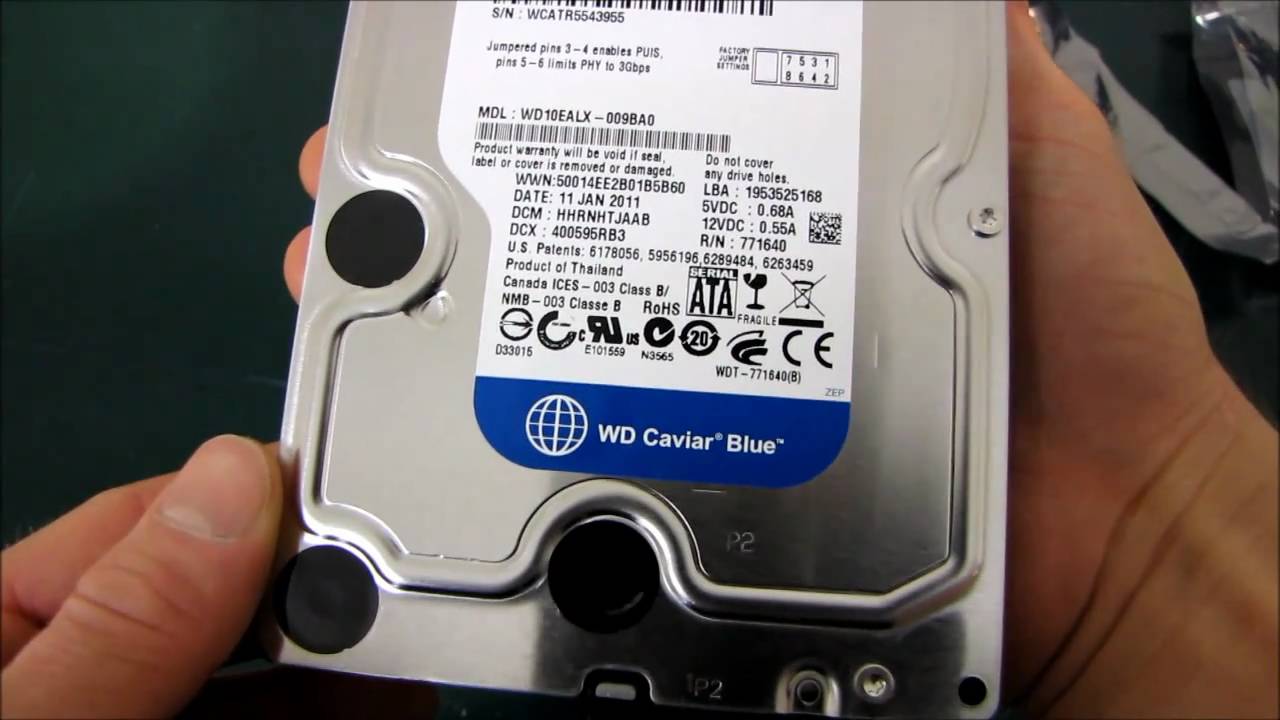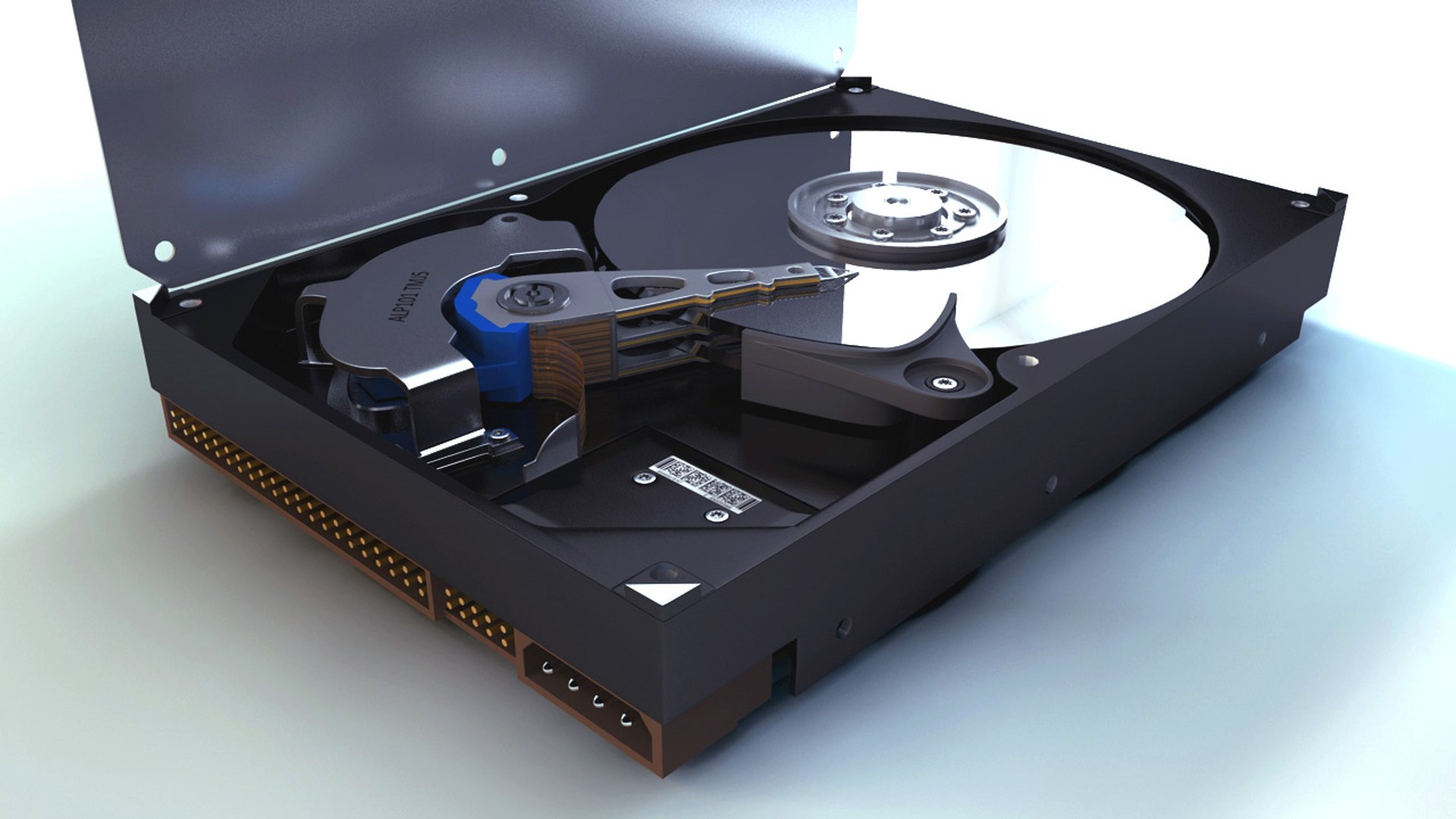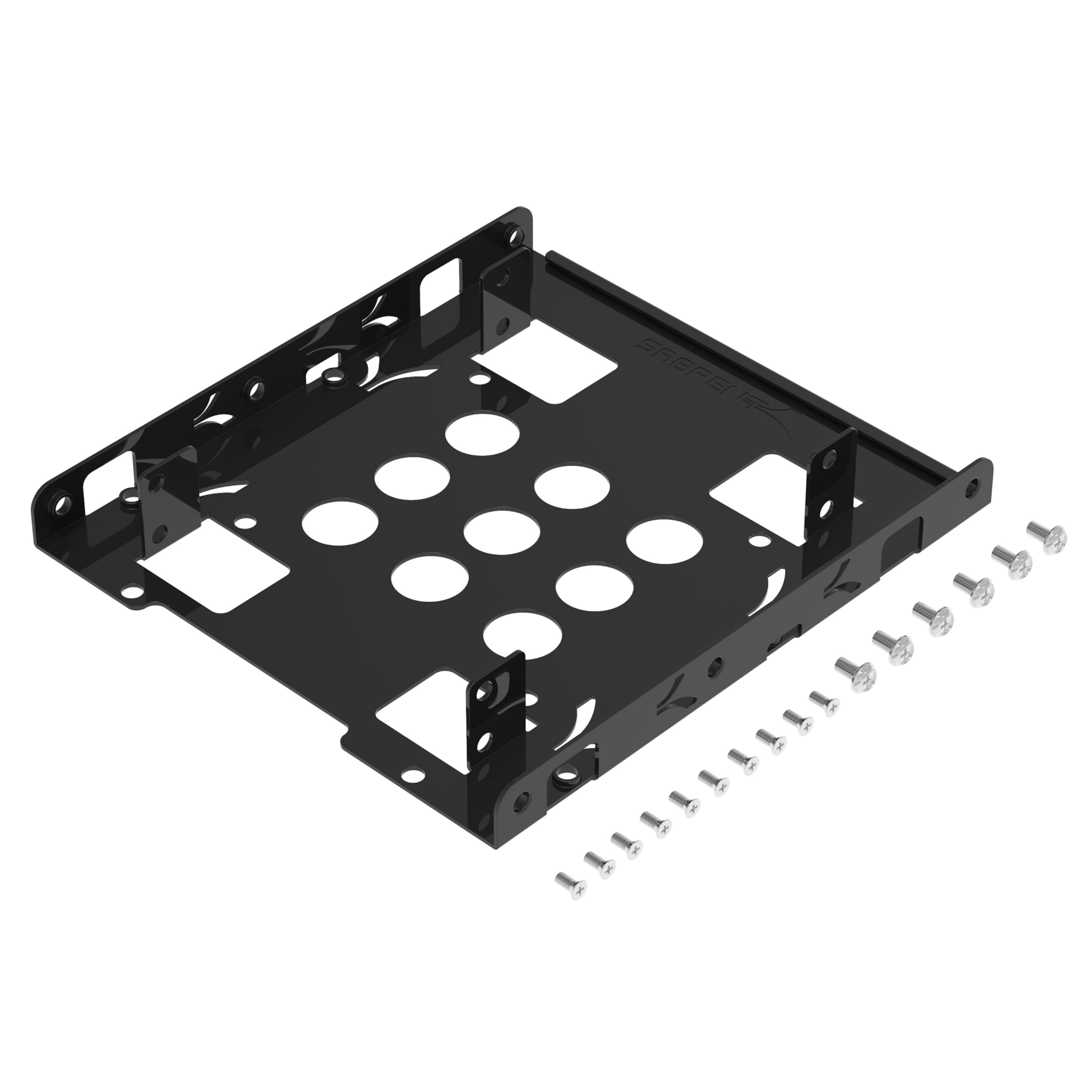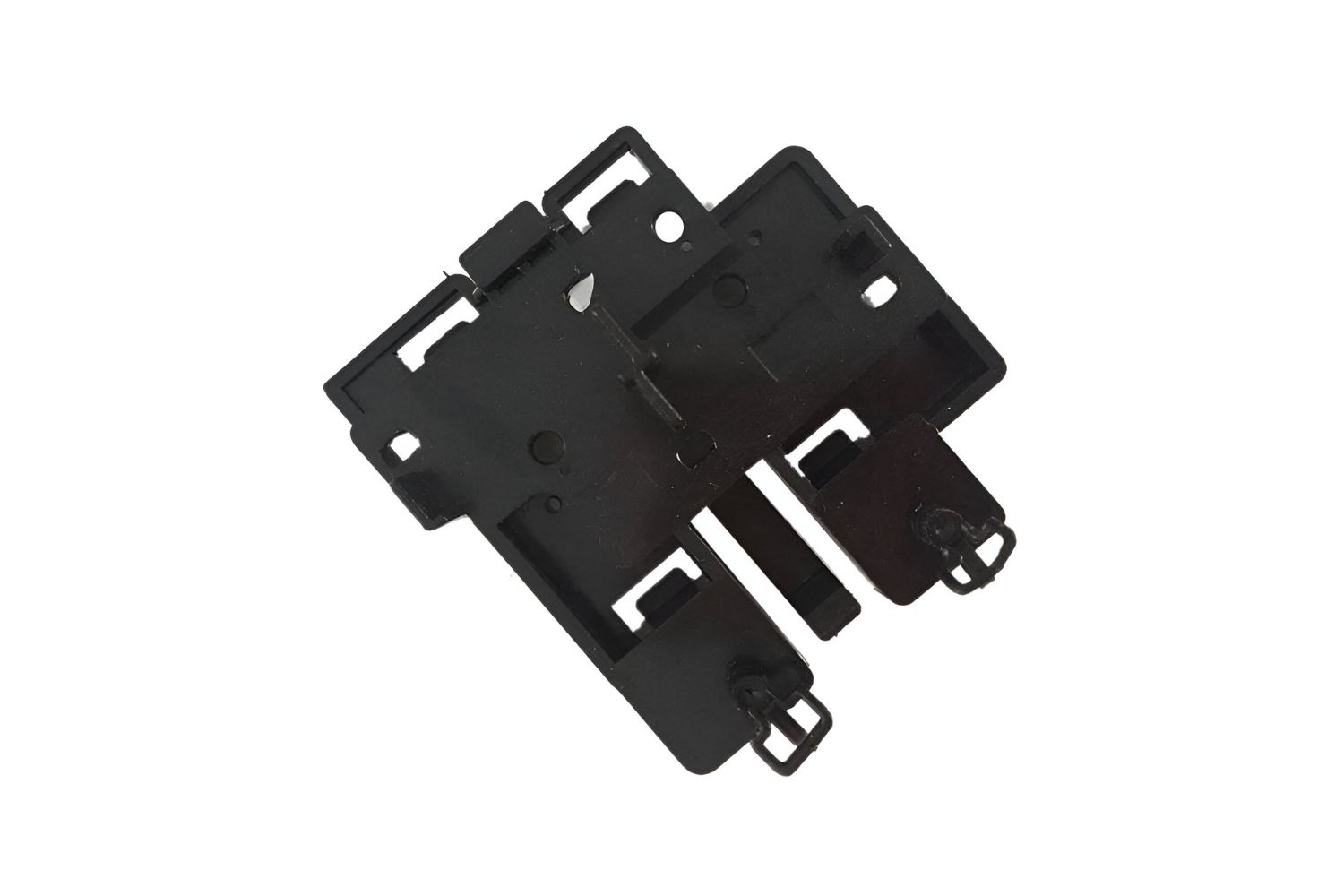Introduction
Welcome to the world of hard disk drives! If you have ever wondered about the inner workings of these essential storage devices, you’re in the right place. Whether you’re a tech enthusiast, a computer professional, or just curious about how things work, understanding the components of a hard disk drive is fascinating.
A hard disk drive, commonly referred to as an HDD, is a vital component of any computer system. It serves as the primary storage device, housing all your important data and files. From operating systems to multimedia files, everything is stored on the hard disk drive.
In this article, we will explore one of the intriguing aspects of hard disk drives: the pins. These pins play a significant role in the overall functionality of the drive. We will dive into the details of how many pins are found in a typical hard disk drive, the pin configuration in different types of drives, and the importance of these pins.
So, if you are ready to unravel the mysteries of pins in hard disk drives, let’s get started!
What is a Hard Disk Drive?
A hard disk drive (HDD) is a mechanical storage device used to store and retrieve digital data. It is one of the most common and widely used storage devices in computers and laptops. The primary function of a hard disk drive is to provide long-term storage for operating systems, software programs, and user files.
The basic design of a hard disk drive consists of a spinning platter or multiple platters coated with a magnetic material. These platters are stacked vertically, and a read/write head hovers just above the surface of each platter. The read/write head is responsible for accessing and modifying the data on the platter.
When you save a file on your computer, the data is converted into magnetic signals and stored onto the surface of the platter. Similarly, when you want to retrieve a file, the read/write head locates the specific location of the data on the platter and reads the magnetic signals to retrieve the information.
Hard disk drives are known for their large storage capacities, ranging from a few gigabytes to multiple terabytes. They are capable of storing vast amounts of data, making them ideal for storing large files such as videos, images, and documents.
However, it’s important to note that hard disk drives have moving parts, which make them susceptible to mechanical failures and slower performance compared to solid-state drives (SSDs). Despite this, hard disk drives continue to be popular due to their cost-effectiveness and high storage capacities.
Now that we have a basic understanding of what a hard disk drive is, let’s take a closer look at the various components that make up this essential storage device.
The Anatomy of a Hard Disk Drive
To fully grasp the workings of a hard disk drive, it’s crucial to familiarize ourselves with its various components and their functions. Let’s delve into the anatomy of a hard disk drive:
- Platters: These are circular, thin metal plates coated with a magnetic material. The platters are stacked on top of each other and spin at high speeds. All the data is stored on the surfaces of these platters.
- Read/Write Head: Positioned above each platter, the read/write head is responsible for reading and writing data to the surface. It hovers extremely close to the platter without making physical contact, ensuring precision and minimal wear and tear.
- Actuator Arm: The actuator arm, also known as the arm assembly, is attached to the read/write head. It controls the movement of the head, allowing it to access different areas of the platter where the data is stored.
- Spindle: The spindle is the component that holds the platters in place and allows them to rotate at high speeds. It ensures stability and consistent spinning of the platters.
- Motor: The motor is responsible for spinning the platters and controlling their rotational speed. It plays a crucial role in ensuring the smooth operation of the hard disk drive.
- Controller Board: The controller board is the brain of the hard disk drive. It manages the flow of data between the computer and the hard disk drive, controlling functions such as reading, writing, and error correction. It also contains firmware that provides essential instructions for the proper operation of the drive.
All these components work together seamlessly to read, write, and store data on the hard disk drive. The read/write head moves across the platter’s surface, magnetically encoding the data as it writes and decoding it as it reads. This intricate process allows for the retrieval and storage of data quickly and efficiently, enabling the hard disk drive to function as a reliable storage medium.
Now that we have a solid understanding of the anatomy of a hard disk drive, let’s explore one specific component: the pins and their significance in the overall functionality of the drive.
Understanding Pins in a Hard Disk Drive
When we talk about the pins in a hard disk drive, we are referring to the interface connectors that facilitate the connection between the drive and other components of the computer system. These pins play a crucial role in transferring data and power to and from the hard disk drive.
The pins are located on the bottom or back of the hard disk drive and are typically arranged in a specific pattern. They are designed to fit into corresponding connectors on the computer’s motherboard or interface card, establishing a secure and reliable connection.
There are two primary types of pins found in hard disk drives: power pins and data pins.
1. Power Pins: These pins are responsible for supplying electrical power to the hard disk drive. Generally, there are two power pins – one for the +5V (positive voltage) and the other for the +12V (higher positive voltage). The +5V pin provides power for the drive’s electronics, while the +12V pin supplies power to the spindle motor, enabling the platters to rotate.
2. Data Pins: Data pins are responsible for transmitting data between the hard disk drive and the computer system. These pins are often arranged in groups, with each group representing a specific data channel or interface. The most common interface used in modern hard disk drives is the Serial ATA (SATA) interface, which typically consists of seven data pins. These pins transmit data to and from the drive at high speeds, allowing for efficient data transfer.
It’s important to note that the specific arrangement and configuration of pins can vary depending on the type and model of the hard disk drive. Different manufacturers may employ different pin layouts to meet specific design requirements and compatibility standards.
Now that we have a clear understanding of the pins in a hard disk drive, let’s explore how many pins are typically found in a hard disk drive and any variations in pin configuration among different drives.
How Many Pins are in a Hard Disk Drive?
The number of pins in a hard disk drive can vary depending on the interface and model of the drive. Let’s take a look at the most common pin configurations found in popular hard disk drives:
1. Parallel ATA (PATA) Drives: PATA drives, also known as IDE (Integrated Drive Electronics) drives, were commonly used in older computer systems. These drives typically have two rows of 40 pins, divided into 20 pins on each row. These pins are responsible for both data transfer and power supply. However, it’s important to note that modern hard disk drives rarely use the PATA interface anymore.
2. Serial ATA (SATA) Drives: SATA drives have become the standard in modern computer systems. These drives feature a smaller and more streamlined interface compared to PATA drives. SATA drives typically have a 7-pin configuration, consisting of two power pins (5V and 12V) and five data pins. The data pins are responsible for transmitting data between the drive and the computer system.
3. SCSI (Small Computer System Interface) Drives: SCSI drives are used in high-performance computing and enterprise environments. The pin configuration in SCSI drives can vary depending on the specific SCSI standard and the drive manufacturer. SCSI drives usually have multiple channels, each with its own set of pins. Common SCSI configurations include 50-pin, 68-pin, and 80-pin configurations.
4. SAS (Serial Attached SCSI) Drives: SAS drives are an evolution of the SCSI technology, offering faster data transfer rates and improved reliability. The pin configuration in SAS drives is similar to SCSI drives, with different configurations available depending on the specific SAS specification and the drive manufacturer. Common SAS configurations include 29-pin, 36-pin (Mini-SAS), and 68-pin configurations.
It’s essential to note that the pin configurations mentioned above are general guidelines. The specific pin configuration in a hard disk drive may vary depending on the manufacturer and the specific model. Therefore, it’s always recommended to refer to the manufacturer’s specifications or the drive’s technical documentation for accurate information on the pin configuration.
Now that we know how many pins are typically found in different hard disk drives, let’s explore the significance and importance of these pins in the overall functionality of the drive.
Pin Configuration in Different Hard Disk Drives
While we have briefly discussed the pin configurations in popular hard disk drives, it’s important to note that there can be variations in pin configurations even within the same interface type. Let’s take a closer look at the pin configurations in different hard disk drives:
1. SATA Drives: SATA drives are the most common type of hard disk drives used in modern computer systems. As mentioned earlier, SATA drives typically have a 7-pin configuration, consisting of two power pins (5V and 12V) and five data pins. However, it’s worth noting that there are different SATA generations, such as SATA I, SATA II, and SATA III, which can have variations in data transfer speeds and additional features like eSATA for external connectivity.
2. PATA Drives: PATA drives, also known as IDE drives, were widely used in older computer systems. These drives typically have a 40-pin configuration, with 20 pins on each row. These pins are responsible for both data transfer and power supply. However, it’s important to note that PATA drives have become less common in recent years and have been largely replaced by SATA drives.
3. SCSI Drives: SCSI drives, used in high-performance computing environments, typically have multiple channels, each with its own set of pins. The most common SCSI configurations include 50-pin, 68-pin, and 80-pin configurations. The pin configurations can vary depending on the specific SCSI standard and the drive manufacturer. SCSI drives are known for their robustness, reliability, and the ability to handle multiple devices on the same bus.
4. SAS Drives: SAS drives are an evolution of SCSI technology, offering faster data transfer rates and improved reliability. The pin configurations in SAS drives can vary depending on the specific SAS specification and the drive manufacturer. Common SAS configurations include 29-pin, 36-pin (Mini-SAS), and 68-pin configurations. SAS drives are commonly used in enterprise environments where performance and data integrity are critical.
It’s important to consult the manufacturer’s specifications or the drive’s technical documentation for accurate information on the pin configuration of a specific hard disk drive model. These documents provide the necessary details about pin assignments, voltages, and interface compatibility.
Now that we have explored the pin configurations in different hard disk drives, let’s move on to discussing the importance of these pins in the overall functionality and performance of the hard disk drive.
The Importance of Pins in a Hard Disk Drive
Pins in a hard disk drive play a vital role in ensuring the proper functionality and seamless integration of the drive with other components in a computer system. Let’s delve into the importance of these pins:
1. Data Transfer: The data pins in a hard disk drive are responsible for the transfer of data between the drive and the computer system. These pins facilitate the flow of information, allowing for the reading and writing of data on the drive. The efficiency and speed of data transfer greatly depend on the quality and integrity of these pins and their electrical connections.
2. Power Supply: The power pins in a hard disk drive provide the necessary electrical power for the drive’s operation. These pins supply power to the drive’s electronics and the spindle motor, ensuring the drive functions optimally. Reliable power connections are crucial to prevent data loss, drive malfunctions, and other performance issues.
3. Compatibility: The pin configuration of a hard disk drive ensures compatibility with the appropriate interface on the computer’s motherboard or interface card. This allows for easy installation and connection of the drive within the system. By following standardized pin configurations, hard disk drives can seamlessly integrate into different computer systems, ensuring compatibility and ease of use.
4. Signal Integrity: The pins in a hard disk drive are designed to maintain signal integrity, meaning they prevent data corruption, interference, or loss during transmission. Well-designed and properly connected pins help maintain a stable and reliable connection and prevent data errors that could affect the performance and integrity of the drive.
5. Scalability and Future Upgrades: The pin configuration in a hard disk drive is designed to allow for future scalability and upgrades. As technology advances, newer interfaces and standards may emerge, requiring different pin configurations. By following standardized pin configurations, hard disk drives can easily adapt to these changes, ensuring compatibility with newer systems and interfaces.
Overall, the proper functioning and connectivity of pins in a hard disk drive are crucial for data transfer, power supply, compatibility, signal integrity, and future scalability. Understanding and maintaining the integrity of these pins is essential for optimal performance, reliability, and longevity of the hard disk drive.
Now that we have explored the importance of pins in a hard disk drive, we have gained a comprehensive understanding of how these small connectors contribute to the overall functionality and performance of the drive.
Conclusion
Understanding the inner workings of a hard disk drive, including its pins and their configurations, provides valuable insights into how these essential storage devices function. The pins play a critical role in data transfer, power supply, compatibility, signal integrity, and future scalability.
We explored the different pin configurations found in popular hard disk drives, such as SATA, PATA, SCSI, and SAS drives. Each interface has its own unique pin layout and purpose, ensuring seamless integration and efficient operation within a computer system.
By comprehending the significance of pins in a hard disk drive, we can appreciate the intricate processes involved in storing and retrieving data. From the power pins supplying electrical power to the data pins facilitating data transfer, each pin contributes to the overall functionality and performance of the drive.
It’s important to note that the specific pin configurations can vary depending on the manufacturer, model, and interface type. Therefore, consulting the manufacturer’s specifications and technical documentation is crucial to ensure accurate pin configuration information for a particular hard disk drive.
In conclusion, the pins in a hard disk drive are not just mere connectors but crucial components that enable efficient data transfer, reliable power supply, compatibility, and signal integrity. As technology continues to advance, understanding the evolving pin configurations and their roles will remain essential for maintaining and upgrading hard disk drives in the future.







